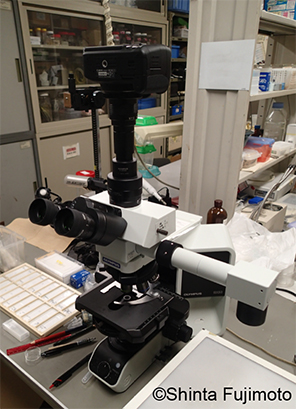
How do you observe them?
If you find a marine tardigrade and want to have a close look at him/her, you needObserving marine tardigrades alive
Prepare a depression slide or put clay feet on your coverslip so that the bear would not get too squeezed. Watch out for the drying of the sea water and the salinity getting too high as they would be unhappy and stop moving. Batillipes has suction pads so you would be able to see them walking on the glass. Most genera without suction pads/discs would be struggling to cling to something.Detailed observation
Fix the animal with formaldehyde* and mount it in glecerol, Fluoromount-G(R), or Hoyer’s medium** on a slide. Adding too much mounting media makes a deep preparation, difficult to observe the detail. For species identification, observation at 1000x is necessary. For three-dimensional structures the differential interference contrast microscopy is very helpful and for flat structures, especially the alae and caestus of Florarctus, the phase contrast microscopy is effective.For external surface structures, scanning electron microscopy is a powerful tool.
(*) 2 - 4 % Formaldehyde, good to be buffered with borax as the feeding structures are encrusted by calcium carbonate. For morphological observation, ethanol is not recomended as it severely deforms the animal.
(**) This medium is useful only when observing hard structures and not recommended in general.

Olympus BX53phase contrast microscope with a drawing tube.